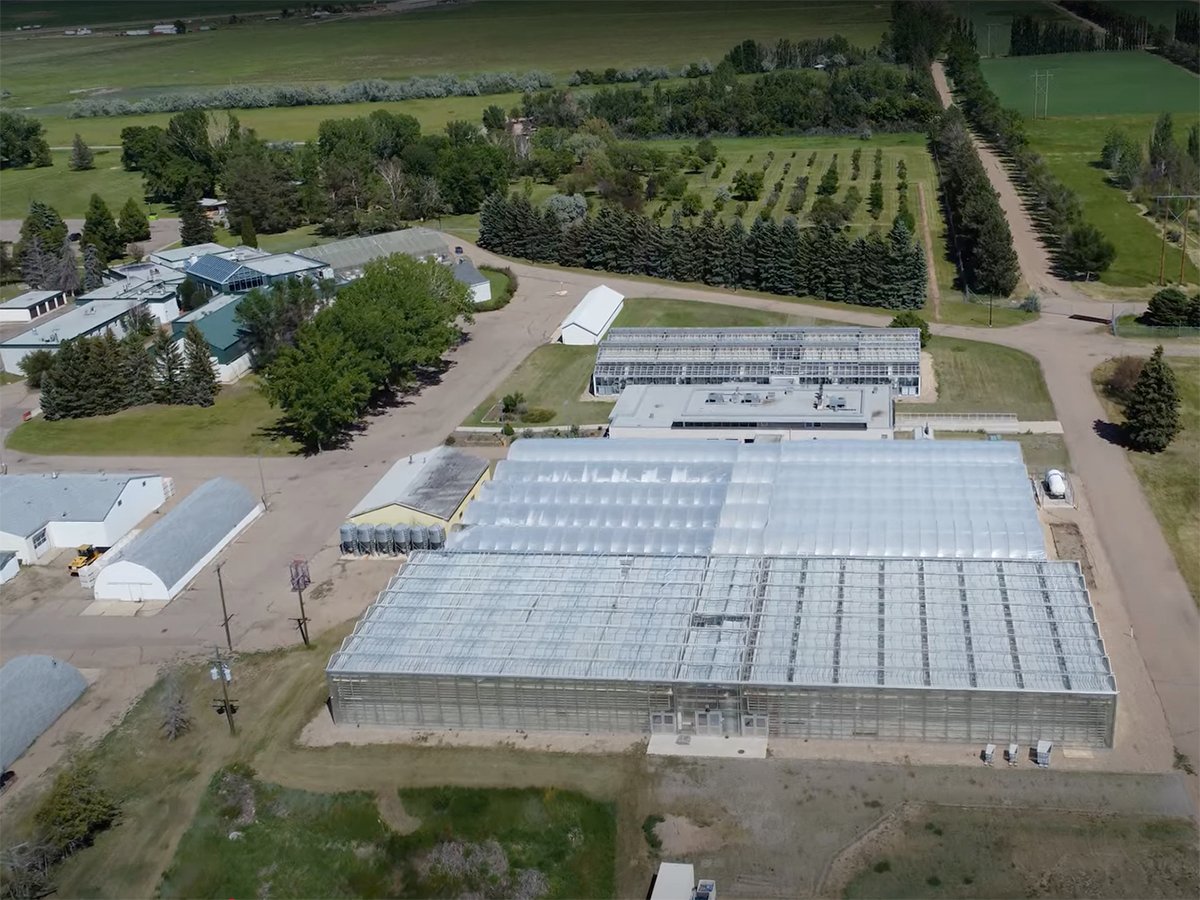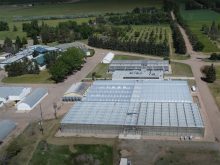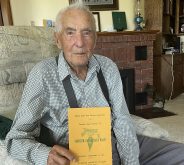GLADSTONE, Man. – Curiosity gets the better of a cattle producer standing near a chute where Tanya Anderson is performing a breeding soundness evaluation on one of his bulls.
Anderson, a veterinarian at this community in central Manitoba, and her assistants are doing the usual things like measuring the circumference of the bull’s scrotum and taking a sample of its semen.
But when Anderson takes a black marker and makes small dots on the back of the bull’s scrotum, the owner becomes more attentive. And when she begins reading numbers from a hand-held device aimed at the black dots she has made on the scrotum, the producer can no longer restrain himself. He quietly asks what she is doing.
Read Also

Alberta crop diversification centres receive funding
$5.2 million of provincial funding pumped into crop diversity research centres
Anderson explains that she is taking temperature readings from each of the eight black dots she has marked on the scrotum. Those readings will later be evaluated as part of an innovative effort to improve breeding soundness evaluations.
The research, funded by Saskatchewan’s Cattle Marketing Deductions Fund, is being led by Kelly Beaulieu, manager of agricultural research and development for the Portage la Prairie, Man., station of the Prairie Agricultural Machinery Institute. Anderson’s involvement is a key part of the research effort.
The hope is to find an effective and affordable way to take temperatures from the surface of a bull’s scrotum and to use those readings to reveal whether the bull will be a stud or a dud when released onto pasture to breed cows.
Beaulieu estimates that if the method they are researching proves effective, it could save cattle producers across the Prairies millions of dollars annually by improving the way bulls intended as herd sires are screened.
The current study builds upon work done by scientists at Agriculture Canada’s Lethbridge, Alta., Research Centre who confirmed that infrared thermal images can be used to identify bulls with fertility problems.
Basically, by using infrared thermography to map out the surface temperature of the scrotum from top to bottom, it was possible to identify irregularities that could point to sperm problems.
Pregnancy rates were about 15 percent lower in cows bred by bulls with abnormal thermographs compared to cows exposed to bulls with normal thermographs.
The researchers at Lethbridge noted that most bulls with abnormal thermographs had poor quality semen. However, the researchers also noted that not every bull with poor quality semen had an abnormal thermograph.
Therefore, it was concluded that infrared thermography could not replace existing breeding soundness evaluations, but it could enhance the ability to screen out bulls more likely to have fertility problems.
Despite those findings, there was no immediate rush to incorporate infrared thermography into breeding soundness evaluations. The cost of that technology was the deterrent.
The equipment used by researchers at Lethbridge to do the infrared thermography cost about $50,000 per unit. That was too expensive for a typical vet clinic on the Prairies.
That’s where current research comes into the picture. After reading the findings from the Lethbridge Research Centre, Beaulieu began wondering whether there might be a more economical way to do the heat imaging while still getting reliable results.
Brainstorming led to the idea of using a hand-held infrared thermometer to take temperature readings off the scrotum.
The one used in the PAMI research costs $1,500 and looks somewhat like a handgun.
The infrared thermometer is used to take temperature readings from each of the eight black dots made on the back of the scrotums of bulls included in the research. The dots are placed so that the temperature readings taken from those points should reveal any significant thermal abnormalities in the scrotum.
In the coming months, Beaulieu will analyze the data gleaned from the research work at the Gladstone vet clinic.
From that analysis, she should be able to tell whether the thermal mapping of the scrotum, done with the hand-held infrared thermometer, would be useful in breeding soundness evaluations.














